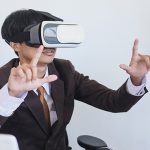
Metaverse, web 3.0 and legal issues
The Metaverse will undoubtedly be one of the buzzwords also in 2023, companies will bet heavily on being in it, although as McKinsey said “No official definition yet exists for metaverse, but companies can’t afford to wait until one does or the metaverse fully evolves to start experimenting and investing in it,” and in reality and much as the press keeps talking about metaverse, we are in a very incipient stage, which we could call the age of protometaverses, designed mostly using web 2.0 (which allows users to interact with platforms using a two-way system) which according to current trends, will lead to a metaverse under architecture 3.0 (that is, on a decentralized network, putting the user at the center, open to all – with an upward design – and built on blockchain technologies and developments in Semantic Web, which describes the web as a network of linked data with meaning, surpassing the user-platform two-way system).
Despite interesting projects, we are witnessing the emergence of “Metaverses” owned by private companies, such as Mark Zuckerberg’s famous Meta, which are trying to position themselves in this segment, arrive first and develop an environment where users can enter these new worlds, under the rules and principles of the platform, like Parzival in Ready Player One. Although novel, this system is not unfamiliar to us, as we will have terms of use, a registered office, corporate emails, etc. When we are actually in a decentralized procedure, where the functioning of the metaverse is established by internal rules or consensus protocols, we will find the real change in the rules of the game.
Once this small nuance has been made, we will analyse from a digital law perspective the impact of these “metaverses” on the different sectors of law:
Intellectual property rights:
With regard to these rights, given the controversies that have arisen in recent months, the first statement we must affirm is that its basic principles are still in force, the author is considered as such and acquires all patrimonial and moral rights, by mere creation of the work.
It should be noted, however, that it is necessary to distinguish between the original work and the support to which it is incorporated, for example, an NFT. It is quite common for the holder of intellectual property rights to grant a license, exclusively the necessary patrimonial rights for the incorporation of the work into the NFT but no other rights. A less virtual example that allows us to understand this point is the famous acquisition for 2.6 million euros of a book from the Dune saga, written by Jodorowsky, which included sketches and schematics of a potential film and was used by the author to present his project to film studios. The owner acquired it thinking he could make an audiovisual work, but what he acquired was a precious book to put on his shelf, not the rights to transform its content.
Industrial Property Rights:
The novelty can be found regarding trademarks. Companies like Nike or Levi’s are submitting a multitude of applications to cover their products in the metaverses, in order to avoid situations like the one that happened at the end of 2021 with Hermès, which protested and sued the artist Mason Rothschild for creating and selling, on OpenSea, a collection of NFTs practically identical to the valuable and recognizable Birkin bag. It is estimated that the sale of these NFTs generated almost one million USD.
To avoid similar conflicts, the European Union Intellectual Property Office (EUIPO) has established that virtual assets and NFTs must be framed in Class 9 of the Nice Classification, because they are considered digital content, while services related to them should be classified according to the principles established for the classification of services.
Data Protection:
This may be the area where the metaverse has the greatest impact given its nature, as the metaverse will allow for a large degree of user behaviour parameterization using different sensors, 3D cameras or VR/AR headsets. These tools will serve to “introduce” the user into more personalized metaverses, but also to collect hundreds of user data per second.
As a result, the volume of personal data, including biometric data, that can be processed is huge. In this sense, the key is that all participants jointly design a sensible model, where the rights of users are respected, but legitimate models are not undermined. The principles of the GDPR promote this coherent adaptation, from the paradigm of the implementation of privacy policies by the design.
As the metaverses evolve, it is very likely that the treatment of personal data will become more complex, systematically multilateral and international treatments, probably outside the EU borders, so bilateral agreements between states or multilateral agreements between groups of countries along with standardized clauses will be indispensable instruments to ensure the correct treatment of data.
In conclusion, the metaverse generates many expectations and many challenges for lawyers, and it is very possible that the regulations that will have to regulate it will be a step behind, but being consistent and applying interpretive principles among all, we can achieve that the metaverse(s) are safe for anyone who wants to venture into these new universes.
At Letslaw we are specialists in digital law and we can help you with your legal issues both in this reality and in metaverses.

Letslaw es una firma de abogados internacionales especializada en el derecho de los negocios.







